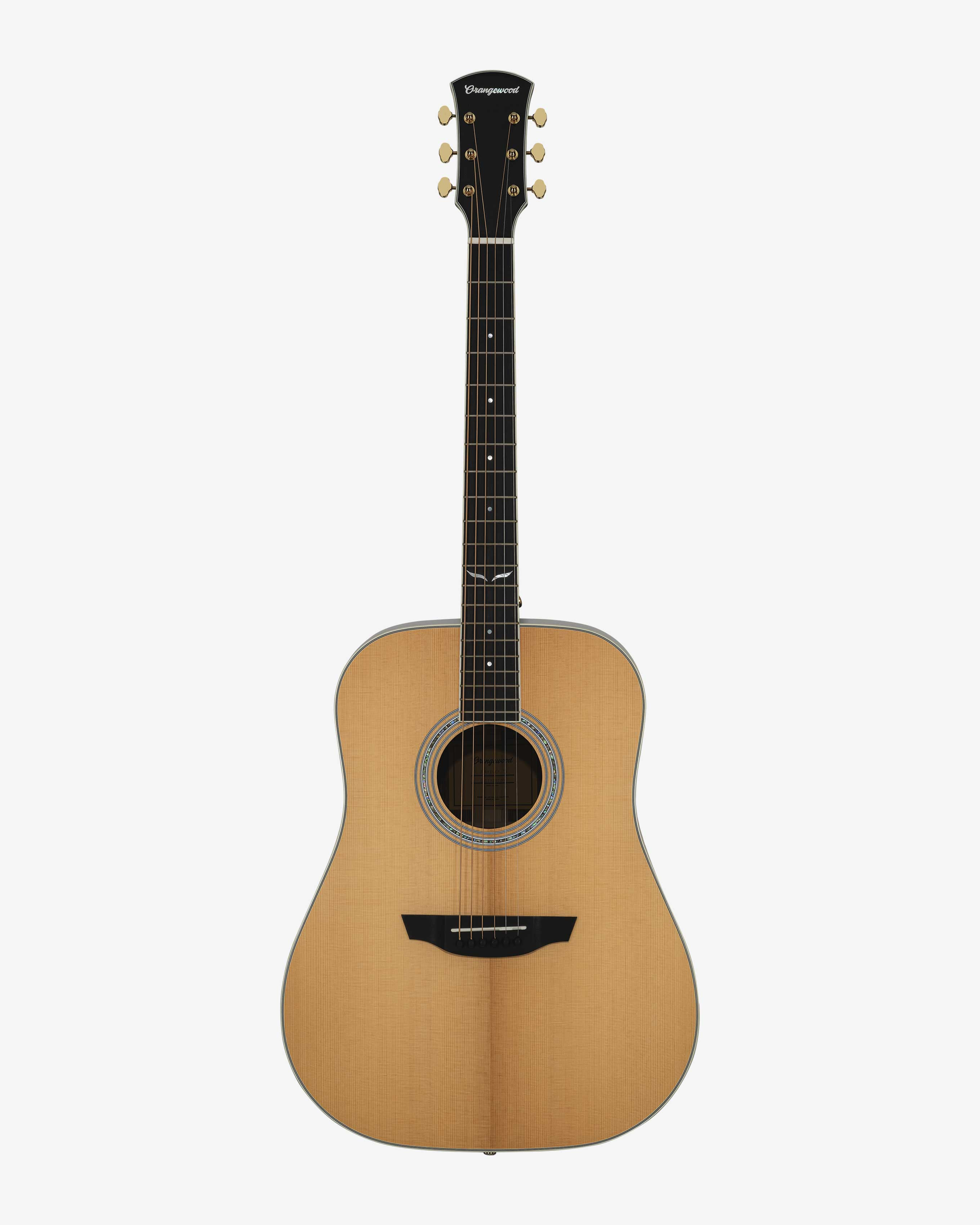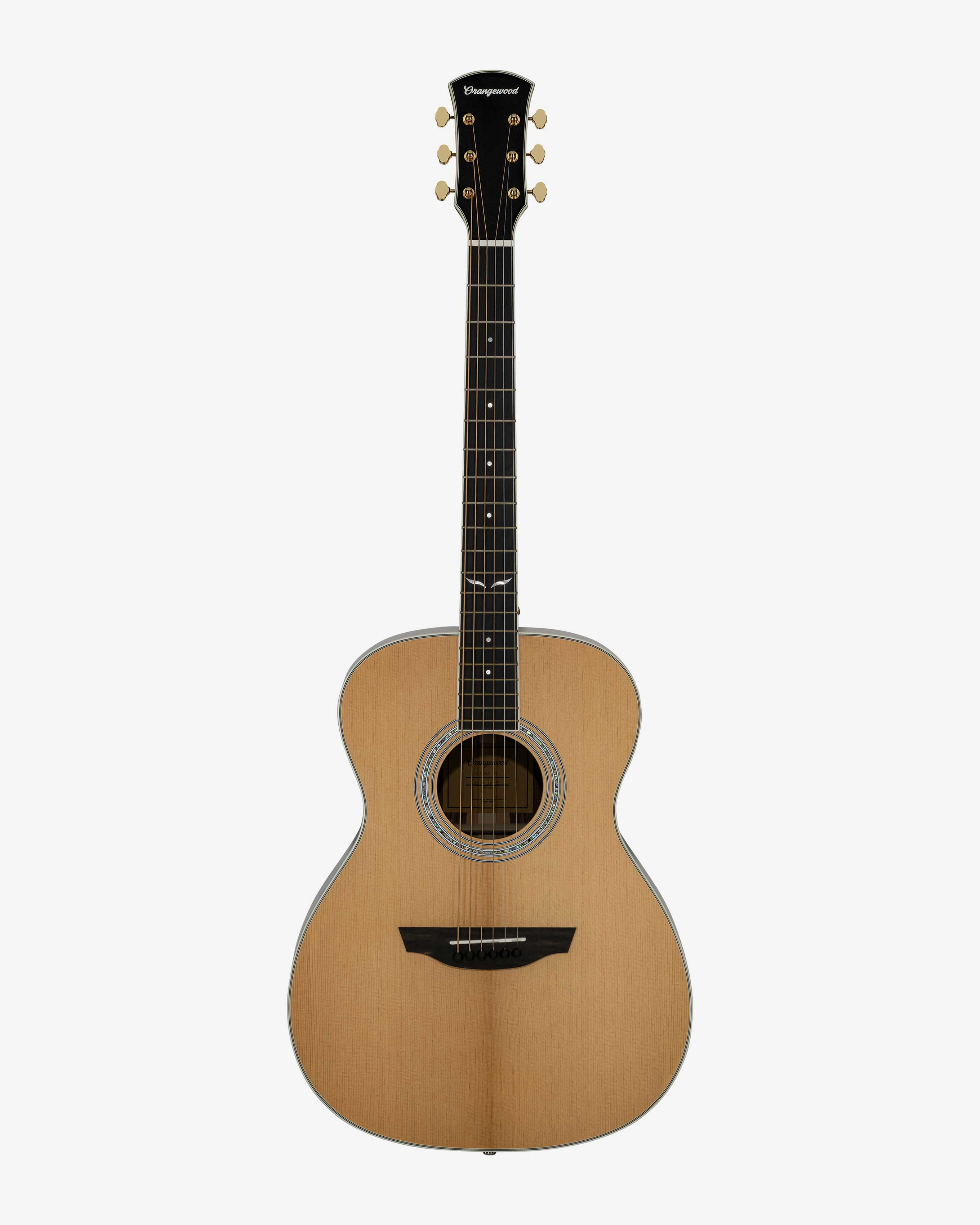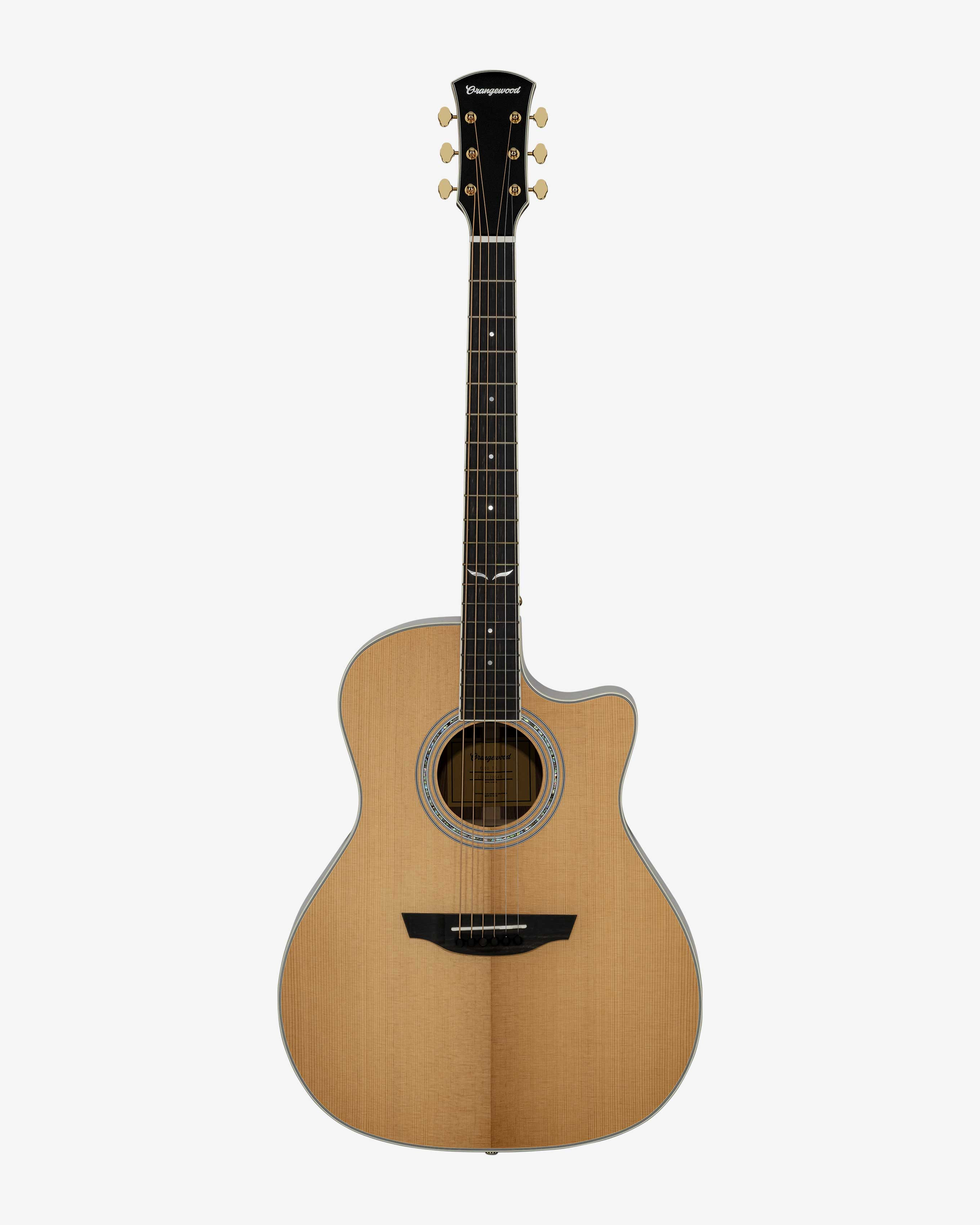Graphic by Allyson Millard
One of the captivating aspects of the guitar is its inherent individuality – no two instruments are exactly alike. When you delve into the world of acoustic guitars, this uniqueness becomes even more pronounced, especially when considering the variety of body shapes and sizes. These variations are not merely aesthetic; they profoundly impact the guitar’s sound and playability. Whether you’re drawn to the iconic silhouette of a traditional acoustic guitar or seeking a unique instrument that stands out, understanding Guitar Body Styles is crucial. Orangewood Guitars offers a diverse range of body shapes, each designed to help you sculpt your ideal sonic landscape.
In this comprehensive guide, we’ll explore three of the most prevalent acoustic guitar body styles available today: the dreadnought, grand concert, and grand auditorium cutaway. We will meticulously examine the visual characteristics, tactile experience, and sonic nuances of these distinct body shapes, empowering you to determine which one resonates best with your personal playing style and musical aspirations.
Dreadnought: The Iconic Acoustic Powerhouse
 Torrefied spruce dreadnought acoustic guitar with ebony fretboard, mother of pearl fretboard inlays, abalone rosette, and gold hardware, showcasing its robust body shape
Torrefied spruce dreadnought acoustic guitar with ebony fretboard, mother of pearl fretboard inlays, abalone rosette, and gold hardware, showcasing its robust body shape
Berkeley $895.00
First on our list is the legendary dreadnought. When you conjure an image of an acoustic guitar, chances are the dreadnought’s robust form is what immediately comes to mind. As the largest body shape among the models we’re discussing, the dreadnought is engineered for volume and impressive sustain. Guitarists are often drawn to the dreadnought for its commanding presence, characterized by a punchy midrange and a powerful low end.
This body style is exceptionally well-suited for dynamic strummers, singer-songwriters seeking a strong rhythmic foundation, and musicians performing with larger ensembles. Particularly favored in genres like rock, country, and bluegrass, the dreadnought has become a standard acoustic guitar shape, shaping the sound of countless iconic songs across music history.
However, it’s worth noting that the dreadnought’s size can be a factor in comfort. Beginners, younger players, or adults with smaller frames might find the larger body less comfortable to handle initially. For enhanced playability, especially for those finding the dreadnought cumbersome, exploring smaller body shapes (discussed below) is advisable.
Shop Dreadnought Guitars
Grand Concert: Intimate and Balanced Tone
 Torrefied spruce grand concert acoustic guitar with an ebony fretboard and mother of pearl inlays, highlighting its comfortable and balanced design
Torrefied spruce grand concert acoustic guitar with an ebony fretboard and mother of pearl inlays, highlighting its comfortable and balanced design
Sierra $895.00
The grand concert body style offers a wealth of appealing qualities. Similar in dimensions to a classical guitar, the grand concert features a refined, narrower waist. This design contributes to its signature well-balanced midrange tone. In contrast to the dreadnought’s bass-heavy and resonant sound, the grand concert is celebrated for its articulate and intimate voice. This body shape truly excels for fingerstyle guitarists who prioritize clarity, note separation, and a balanced sonic profile in their playing.
From a player’s perspective, the grand concert’s more compact form and typically lower string tension translate to an exceptionally comfortable playing experience, especially when seated. If you’re seeking a guitar that facilitates hours of practice without physical strain, the grand concert is an excellent choice. An added advantage is its lightweight nature, making it an ideal companion for travel.
Shop Grand Concert Guitars
Grand Auditorium Cutaway: Versatility and High-Fret Access
 Torrefied spruce grand auditorium cutaway acoustic guitar with ebony fretboard, abalone rosette, and cutaway for upper fret access, demonstrating its versatile shape
Torrefied spruce grand auditorium cutaway acoustic guitar with ebony fretboard, abalone rosette, and cutaway for upper fret access, demonstrating its versatile shape
Cleo $895.00
Finally, we arrive at the grand auditorium, a truly versatile guitar body style. This medium-sized shape effectively bridges the gap between the dreadnought and grand concert acoustics, offering a balanced set of characteristics. The grand auditorium shares overall similarities with the concert shape, but distinguishes itself with a wider lower bout, approaching the size of a dreadnought. This design creates an appealing middle ground, delivering both ample volume and comfortable playability. Characterized by its well-defined and clear tone, the grand auditorium proves to be a remarkably adaptable choice, accommodating both strumming and fingerstyle techniques with equal finesse.
What further distinguishes many grand auditorium models, including Orangewood’s grand auditorium guitars, is the inclusion of a cutaway. This scooped indentation in the upper bout, near the neck joint, is designed to enhance access to the higher frets on the guitar’s neck. While not universally present on all grand auditorium guitars, the cutaway is a frequently incorporated feature. For fingerstyle players who venture into the upper registers of the fretboard, a cutaway becomes an invaluable asset, facilitating comfortable and unimpeded playing in those higher positions.
Shop Grand Auditorium Cutaway Guitars
Finding the Right Guitar Body Style for You
While owning a classic guitar body style is a cornerstone of any guitarist’s collection, the world of acoustics extends far beyond these three shapes. Exploration into other body styles, such as parlor, jumbo, and mini guitars, opens up even more sonic possibilities. To delve deeper into these alternative models, Orangewood’s specialty guitar guide offers further insights into unique guitar designs.
Ultimately, the most important aspect of choosing a guitar is finding one that resonates with you personally. Whether you’re captivated by the powerful projection of a dreadnought or the exceptional comfort of a grand concert, your ideal guitar is the one that inspires you to pick it up and play with enthusiasm, day after day.
